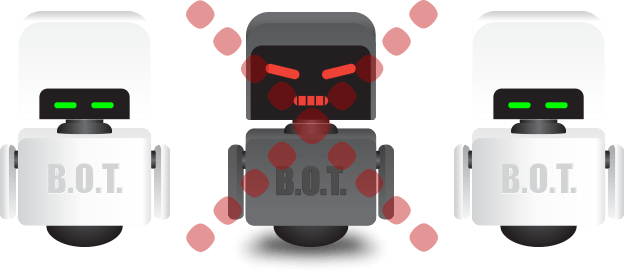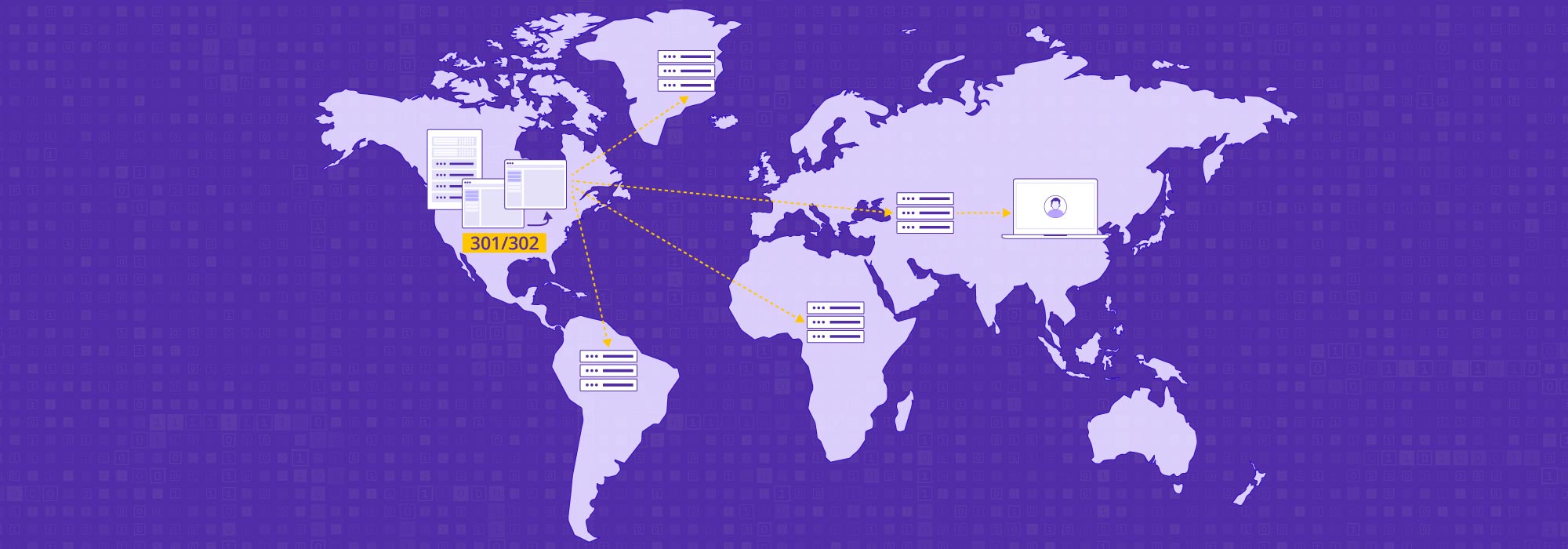What is a Bot?
But what exactly is a bot in the first place? Put simply, a bot is a program that is tasked with performing some actions without the need for further human intervention. The idea is that bots can automate some routine and repetitive tasks that could take humans much longer to get done and do so with no errors.
Bots can be programmed to do something as simple as filling out and submitting forms, crawling a web page, or downloading content. They can also be used to like, follow or interact with users on social media platforms. Examples of bots include the Google crawlers, chatbots that automate responses to FAQs on websites.
Good Bots vs Bad Bots
Not all bots are equal or created with the same intentions. Some are designed with a legitimate purpose, while others are created solely to cause harm.
Good bots are those that assist humans with a service. These can include search engine crawlers, customer support chatbots that automate responses to FAQs, and bots that help monitor the performance of a website to alert owners and admins of anomalies. Any website that incorporates a bot must follow the rules outlined by Google in the robots.txt file.
Bots created specifically to misuse products, harm websites, or interrupt services are bad bots. Some specific examples of bad bots include email harvesting bots that spam users to collect their email addresses, those that try to hack into user accounts, and others that use up a website’s resources.
Sometimes bots can be controlled remotely in a network called a botnet, which can be used to launch cyberattacks like the DDoS threat.
What is Bot Management?
Bot management refers to real-time protection and the blocking or filtering of malicious internet bot traffic while allowing good bots to pass through. Good bots can include those like Google crawlers which are necessary to let through. The primary purpose of bot management is to detect suspicious bot activity. This protection involves identifying which bots are exhibiting undesirable behavior that needs to be stopped and placing the bot’s source.
How Does a Bot Manager Work?
Bot managers work by blocking malicious bots from hijacking your assets and thereby strengthening your website security and reliability. They eliminate bad bots and redirect good bots the right way. As a result, they improve the end-user experience and protect your business from losses and reputation damage.
A bot manager comes in the form of a software product that accomplishes particular specific objectives. These include telling bots from human visitors, analyzing the bot’s behavior, reputation and origin, IP addresses, and IP reputation. Bot managers also enable you to add “good” bots to a list so that they can be allowed to do their job.
For example, Google uses a bot to index a web page to rank them on Google search results. If these bots are not including the good bots list, it could affect your website’s ranking and organic traffic.
Bot managers could employ various security solutions, including machine learning algorithms and threat intelligence, to assess bots, detect and block suspicious activity while allowing legitimate bots to operate uninterrupted.
The Approach
When it comes to bot detection, there are typically three main approaches:
Static: For bots that are known and active, a static approach can help with detection. This detection involves using static analysis tools that look for header information and web requests typical of bad bots.
Behavioral: A behavioral approach, on the other hand, can be used to distinguish between legitimate users, good bots, and bad bots by evaluating the activity and matching it against known patterns.
Challenge-based: A third approach involves challenges or tests that bots cannot perform efficiently. This challenge-based approach can include the popular CAPTCHA verification test, Javascript injection, and other methods.
There are also bot mitigation services that can automate some of the above approaches. These services can also monitor your traffic and implement rate-limiting to prevent abuse if you work with APIs. This rate-limiting helps restrict bots across a vast landscape instead of focusing on a single IP address.
What Kind of Bot Attacks are Bot Managers Capable of Stopping?
Bot management functionality may vary slightly between providers. But here are some of the most common bot attacks these managers are used for:
- Credential stuffing – This type of brute force attack involves using bots to continually try lists of stolen credentials to log into an unrelated service. Unfortunately, these attacks are pretty standard as many users utilize the same credentials for multiple accounts.
- Web scraping – The purpose of content scraping is to crawl websites to extract assets from them. Scraped data includes things like pricing information, images, and hidden data. While price comparison sites use web scraper bots legitimately, with prior permission from site owners, malicious bots are also in operation, accessing protected pricing data of innocent businesses.
- Gift card/credit card fraud – Another brute force attack involves creating fake gift cards to use in exchange for the cash equivalent. Some bots also test stolen credit card information by making small, insignificant purchases that are unlikely to be detected. If they work successfully, more significant purchases are then often made.
- Inventory hoarding – eCommerce sales have increased consistently over the past few years. In 2020 alone, global online sales reached a staggering $4.28 trillion, making online shopping platforms a huge target for criminals. Some dishonest individuals use malicious bots to fill online shopping carts with products in high demand, buy them, then sell them at inflated prices via other online platforms.
- Ad Fraud – Pay-per-click (PPC) ads are those which the advertiser is charged each time a user clicks on one. You will have seen them quite regularly as they appear automatically when users search for items via online search engines such as Google. Bots are used to target specific ads that will click on them ‘virtually’ to increase costs for their competitors.
Why is Bot Protection Important?
Without sound bot management solutions and strategies, your business can be susceptible to significant damage.
As mentioned previously, bot attacks come in various forms ranging from stealing intellectual property to launching phishing attacks, spam, and other more dangerous cyber attacks.
Therefore, they can cause true detriment to any business if not managed correctly.




